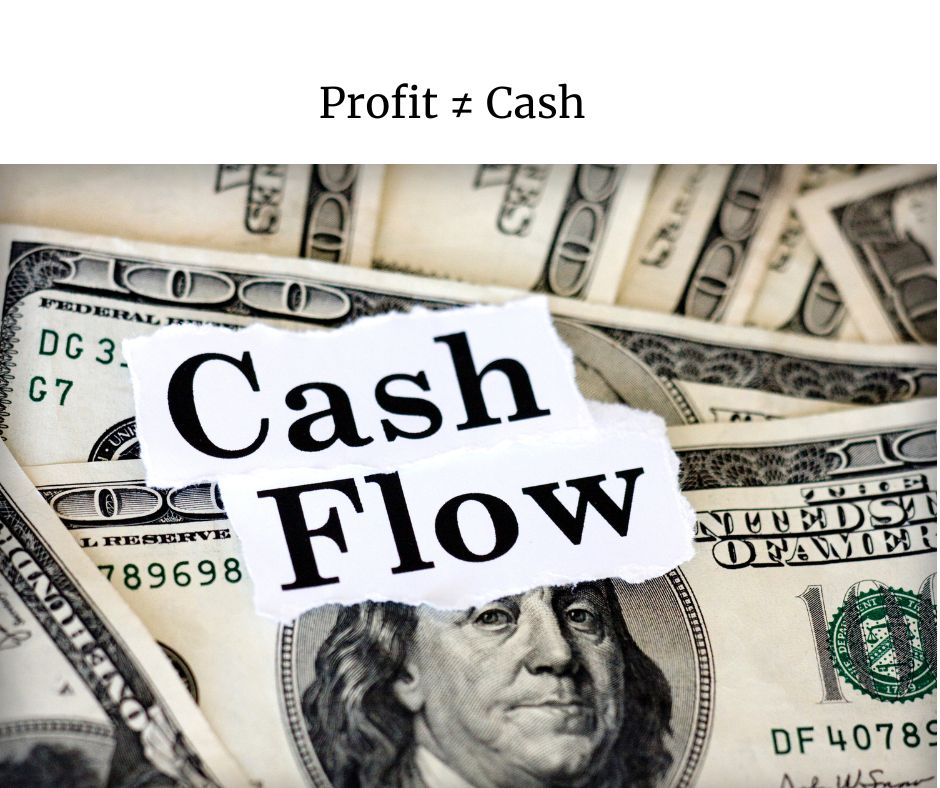“Remember, cash is a fact, profit is an opinion.” – Alfred Rappaport
Have you ever tried to spend the profit from your profit and loss statement? If you have, you quickly realized that profit is just a number your accountant writes down—one that often seems to have little connection to the reality of your bank account. That’s why so many business owners are left scratching their heads when their accountant tells them they’re profitable, but the cash just isn’t there. Conversely, it’s just as confusing when they report a loss, but somehow, you have more cash on hand than you expected. The truth is, profit is an opinion—cash is the fact that keeps your business alive.
The P&L Statement: A Misleading Snapshot
The profit and loss (P&L) statement is a critical tool for tracking your business’s financial performance, but it’s not the whole story. It’s a snapshot that shows whether your business is theoretically profitable, but it doesn’t tell you how much cash you actually have. Why? Because it’s missing key elements that are crucial to understanding your cash flow. Things like loan principal payments, accounts receivable, accounts payable, inventory, personal draws, and money borrowed from investors or banks all affect your cash position but don’t always show up on the P&L in a way that makes sense to business owners.
This is why it’s so easy to feel confused. The P&L might say you’re doing well, but your checking account might tell a different story. It’s like looking at a beautiful painting from a distance, only to realize up close that half the canvas is missing. And let’s be honest, accounting reports are designed more for your accountant to files taxes with the IRS than for you, the business owner who needs to keep the lights on and pay the bills.
The Importance of Cash Flow
Cash flow is the lifeblood of your business. You can’t pay your employees, suppliers, or rent with profit. Only cash can do that. Yet, so many business owners overlook the importance of understanding and managing their cash flow. Sure, QuickBooks can spit out a cash flow report, but if you’re like most owners, the information it provides isn’t actionable in a way that makes sense to you or me.
Mike Michalowicz, in his book Profit First, advocates for a system that ensures you know exactly how much cash you have, where it is, and what its purpose is. This system isn’t just a nice-to-have; it’s a foundation of good financial hygiene for any business. By prioritizing cash management, you’re not just keeping your head above water—you’re setting the stage for sustainable success.
Cash Flow: The Reality Check
Parkinson’s Law states that work expands to fill the time available for its completion, and the same can be said for cash. If you have it, you’ll find a way to spend it, often without a clear return on investment. Many business owners fall into the trap of spending every dime that comes in, operating under the illusion that as long as the revenue keeps flowing, everything will be okay. But the reality is different. Without a firm grasp on your cash flow, you could end up in a situation where your business is technically profitable but starving for cash.
The Fallacy of Profit Without Cash
Let’s revisit the quote by Rappaport: “Cash is a fact, profit is an opinion.” This isn’t just a catchy saying—it’s a cold, hard truth. Profit is often an abstract concept that doesn’t reflect the real financial health of your business. You might feel great about a profit on paper, but if your cash is tied up in unpaid invoices, overstocked inventory, or hefty loan payments, that profit isn’t doing you any good. Worse yet, it could be leading you to make poor decisions based on a false sense of security. Even worse is when the tax bill is due on the profit and you don’t have the cash!
Think about it: What good is a $50,000 profit if you can’t pay your $20,000 tax bill? Or your employees? Or your rent? Profit, in this sense, is more of a philosophical debate, while cash is the undeniable fact that determines whether you can keep the doors open.
The Path Forward: Profit First
Adopting a system like Profit First can help bridge the gap between the abstract idea of profit and the tangible reality of cash flow. By allocating revenue into specific accounts for profit, taxes, owner’s pay, and operating expenses, you ensure that your business has the cash it needs to thrive—not just survive. It’s about taking control of your finances, rather than letting them control you.
The profit you see on your P&L might look impressive, but until that profit is converted into cash, it’s just a number. Don’t fall into the trap of thinking that profit equals success. Real success comes from having the cash you need to run your business, grow, and ultimately, achieve your goals.
So, the next time you’re tempted to celebrate a profitable quarter, remember to check your cash flow first. That’s where the real story lies. After all, cash is a fact, and profit—well, that’s just an opinion.
